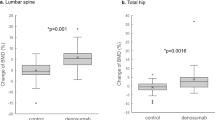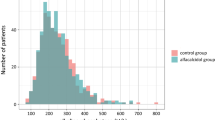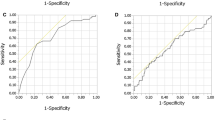Abstract
The bisphosphonate pamidronate (3 amino-1, 1-hydroxypropylidene bisphosphonate (APD), Ciba-Geigy) is a powerful inhibitor of osteoclast function and has been shown to significantly reduce osteolysis associated with bone metastases in breast cancer. Until recently, however, only an intravenous preparation has been readily available. We have evaluated the toxicity and effect on urinary calcium excretion of an enteric-coated oral preparation of pamidronate in a phase I/II trial in patients with bone metastases from breast cancer. Sixteen women with progressive disease and evidence of active bone resorption with an elevated calcium excretion (fasting urine calcium/creatinine ratio greater than 0.4 (mmol mmol-1) on two occasions prior to treatment) were studied. Four were given 150 mg daily; four 300 mg daily; four 450 mg daily and four 600 mg daily. Urinary calcium/creatinine (Ca2+/Cr) ratios were measured on all patients after an overnight fast. In patients on 150 mg daily the mean ratio fell from 0.65 (range 0.57-0.72) before treatment to 0.13 (0.02-0.19) after three weeks treatment. Mean values at entry for patients on 300, 450 and 600 mg were 1.18 (0.72-2.1), 0.76 (0.42-1.5) and 0.63 (0.52-0.82) respectively and after treatment these fell to 0.11 (0.05-0.18), 0.37 (0.14-0.68) and 0.17 (0.06-0.25). There were no significant differences in efficacy between treatment groups. Oral, enteric-coated disodium pamidronate is non-toxic and effectively reduces calcium excretion, raised in association with metastatic bone disease at doses of 150 mg or above. At the doses used to date it is as effective as weekly treatments with 30 mg of the intravenous preparation. Further studies are required in order to determine its value for preventing complications of bone disease and possibly as an adjuvant to surgery for breast cancer.
This is a preview of subscription content, access via your institution
Access options
Subscribe to this journal
Receive 24 print issues and online access
$259.00 per year
only $10.79 per issue
Buy this article
- Purchase on Springer Link
- Instant access to full article PDF
Prices may be subject to local taxes which are calculated during checkout
Similar content being viewed by others

Author information
Authors and Affiliations
Rights and permissions
About this article
Cite this article
Dodwell, D., Howell, A. & Ford, J. Reduction in calcium excretion in women with breast cancer and bone metastases using the oral bisphosphonate pamidronate. Br J Cancer 61, 123–125 (1990). https://doi.org/10.1038/bjc.1990.25
Issue Date:
DOI: https://doi.org/10.1038/bjc.1990.25
This article is cited by
-
Pamidronate: An unrecognized problem in gastrointestinal tolerability
Osteoporosis International (1994)
-
The clearance and bioavailability of pamidronate in patients with breast cancer and bone metastases
Calcified Tissue International (1991)


